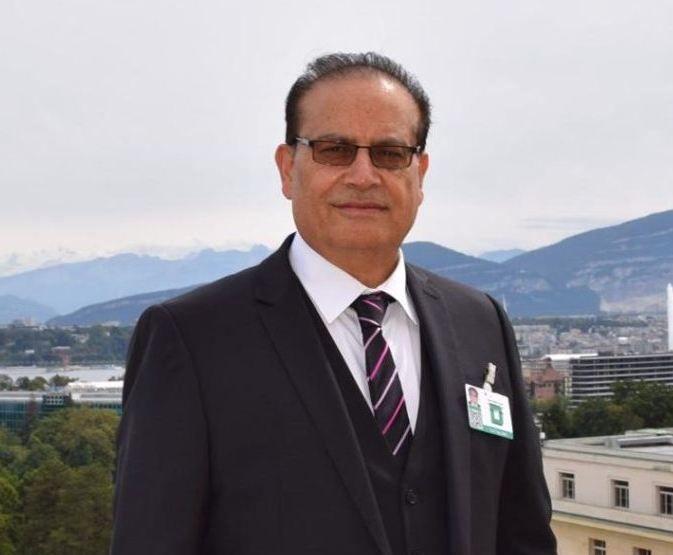By: Qamar Bashir
Macomb, Detroit Michigan
The stunning results of the USA elections surprised both Democrats and Republicans alike. Trump’s unprecedented victory was accompanied by Republican wins in the U.S. Senate and House of Representatives. Before the 2024 elections, Democrats controlled the Senate with 51 seats to Republicans’ 49, while Republicans held a narrow majority in the House with 220 seats to Democrats’ 212. After the elections, Republicans gained control of the Senate with 53 seats, and in the House, they retained their majority with 220 seats to Democrats’ 213, with 2 races undecided. This outcome resulted in unified Republican control of both chambers of Congress.
This has emboldened President-elect Donald J. Trump to undertake one of the boldest policy and administrative decisions in U.S. history, which could be a potential game changer. Mr. Trump has established the Department of Government Efficiency (DOGE), to streamline federal operations by identifying wasteful spending, reducing regulatory burdens, and restructuring or potentially abolishing certain agencies to enhance government efficiency.
He is poised to substantially reduce the size of the U.S. civilian and military bureaucracy, which, according to the strategic reform team led by Elon Musk and Vivek Ramaswamy, has grown excessively large. They argue that the bureaucracy has become a de facto “fourth branch” of government, assuming overriding control over decision-making processes and diminishing the power of the democratically elected political leadership.
The rationale behind this initiative is that the federal bureaucracy has grown disproportionately large, with hefty perks and benefits, while many departments, despite their significant size and employment levels, are either underperforming or have lost sight of their original purpose. This has led to an unsustainable diversion of government funds to sustain a bloated bureaucracy rather than focusing on essential public services.
The composition of the team leading this significant reform effort is noteworthy. Both Elon Musk and Vivek Ramaswamy come from private-sector backgrounds and have no prior experience in government bureaucracy. However, as highly successful corporate entrepreneurs, they bring a proven track record of building organizations from scratch and transforming them into success stories.
For instance, Vivek Ramaswamy, born in Cincinnati, Ohio, to Indian immigrant parents, is a biotech entrepreneur and a prominent Republican figure. A Harvard graduate in biology and a Yale Law School alumnus, he founded Roivant Sciences in 2014, spearheading groundbreaking pharmaceutical ventures. Ramaswamy gained national prominence through his criticism of “woke” corporate culture, as outlined in his 2021 book *Woke, Inc.* Recognized for his conservative principles and innovative thinking, he was appointed by Trump to co-lead DOGE.
His vision includes reducing the federal workforce by up to 75%, abolishing redundant agencies, and implementing eight-year term limits for unelected federal employees to prevent the entrenchment of power. He supports rescinding Executive Order 11246 to shift to a merit-based system and advocates utilizing Schedule F to streamline the removal of “deep-state” actors. These reforms aim to streamline government operations, reduce costs, and ensure a more responsive and meritocratic system.
Like Vivek, Elon Musk is a visionary entrepreneur, engineer, and inventor, known for founding and leading several transformative companies. Born on June 28, 1971, in Pretoria, South Africa, Musk moved to the U.S. to pursue higher education. He earned degrees in physics and economics from the University of Pennsylvania. Musk co-founded Zip2, an online business directory, and PayPal, a digital payments platform, before venturing into ambitious projects like SpaceX, Tesla, Neuralink, and The Boring Company. Through these ventures, Musk has revolutionized industries such as space exploration, electric vehicles, artificial intelligence, and infrastructure, earning a reputation as one of the most influential and innovative leaders of the 21st century.
Elon Musk has consistently called for a drastic reduction in federal bureaucracy, advocating for the elimination of redundant agencies and unnecessary regulations. In a November 2024 interview, he proposed cutting the number of federal agencies from 428 to 99, effectively reducing the government by 77%. The proposed slicing include several agencies, including the Department of Education, FBI, ATF, IRS, CDC, and the Nuclear Regulatory Commission.
Musk has criticized overlapping responsibilities and entrenched bureaucratic elements, often referred to as the “deep state,” which he believes hinder efficiency and innovation. Comparing excessive regulation to having more referees than players in a game, he emphasizes the need for a streamlined, responsive government that fosters progress.
According to the concept, reducing federal bureaucracy by 70% to 77% can promote self-governance, efficiency, and potential tax reductions. By decentralizing power to state and local governments, it would foster greater accountability and responsiveness while empowering communities to address their unique needs.
Moreover, streamlining operations eliminates redundancies will enhance decision-making agility, and will integrate modern technologies to reduce costs. Savings from reduced expenditures can lower taxes, address national debt, and boost public investment in critical areas like infrastructure and social welfare. This leaner structure would encourage economic growth, reduce dependence on centralized systems, and builds trust in a fiscally responsible government, benefiting both individuals and the private sector.
In an hypothetical scenario, if the civil and military bureaucracy is reduced by 77%, it would generate savings of approximately $815.24 billion, and economic growth would add another $260 billion, the total additional funds available would be $1,075.24 billion annually.
If this amount is used to reduce taxes for the common people, it could result in a tax reduction of approximately $3,239 per person annually, significantly easing the financial burden on households across the United States, besides the higher growth rate would amplify the benefits of deregulation and tax cuts, driving economic dynamism, fostering business expansion, and enhancing government revenue through increased overall economic activity.
Though the concept and ideal looks great on paper and while reducing bureaucracy would promise cost savings, improved efficiency, and enhanced self-governance, its practical implementation most likely would face significant challenges.
Political resistance from entrenched interests, legislative hurdles, and opposition from the bureaucracy itself could impede progress. Downsizing risks substantial job losses, economic disruption, and potential service gaps in critical public functions, including national security.
Administrative complexities, such as restructuring workflows and maintaining morale among remaining employees, add further difficulties. The anticipated economic growth from deregulation and tax reductions may not materialize quickly, and regional economies dependent on federal jobs could suffer. Legal and ethical concerns, including labor lawsuits and equity issues, also pose significant risks.
To succeed, such reforms would require a phased, strategic approach, stakeholder engagement, and meticulous planning to avoid unintended consequences and ensure sustainable outcomes.
By: Qamar Bashir
Press Secretary to the President(Rtd)
Former Press Minister at Embassy of Pakistan to France
Former MD, SRBC












